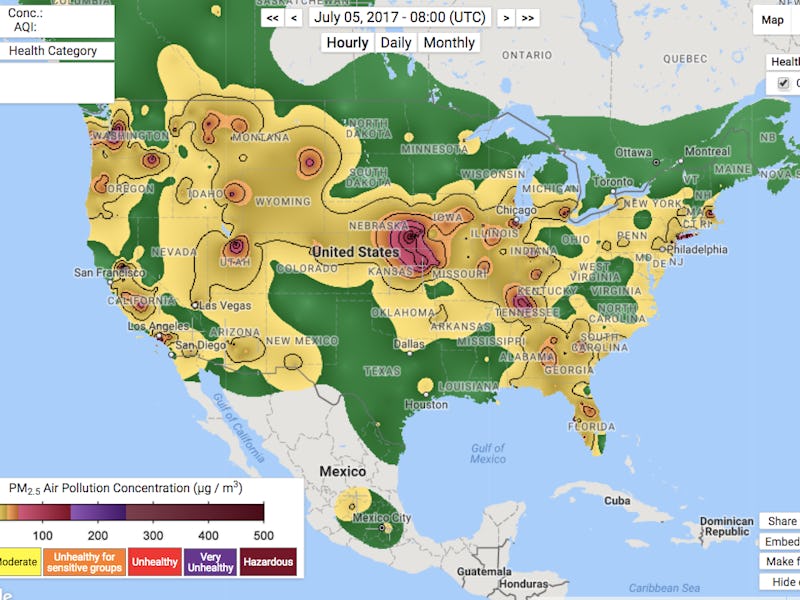Watch a Wave of Smoke From July 4 Fireworks Sweep the U.S.
The spike in particulate matter is significant but fleeting.

Every year, people in the United States purchase the equivalent of 5.9 million pounds of military-grade explosives in fireworks. That’s as much explosive power as 328 Mother of All Bombs.
A large portion of those fireworks are set off on the evening of July Fourth, as the sun sets on Independence Day. The resulting smoke that fills the sky is so dense that it shows up on pollution tracking particulate matter in the air across the country.
The wave of elevated pollution starts on the East Coast, where it gets dark first, and then heads west toward the Pacific. For a few hours, Americans living in populated areas experience air quality conditions along the lines of what a person living in Beijing, China, might breathe in on an average day.
See for yourself. Each frame of the video slideshow represents one hour of time, beginning at 9 p.m. Eastern on July 4, 2017.
“It’s important to see this, and it’s important to know that it’s happening, but I think it’s also important to recognize that it only lasts a couple of hours,” Elizabeth Muller, the Executive Director of Berkeley Earth, the organization that produces the pollution maps, tells Inverse. “In the big scheme of things, pollution from fireworks is much more fleeting than pollution from industry or even pollution from cars.”
Living in persistent pollution is very bad for your health. Analysis by Berkeley Earth found that polluted air kills 1.6 million people annually in China. In the U.S., it kills more people each year than guns or cars.
But Muller isn’t too worried about the consequences of inhaling fireworks smoke, both because the pollution dissipates relatively quickly and because we just don’t have strong data to support a case that it is a public health concern.
“We don’t have much evidence on the impact of these fireworks, and if there were studies that show that there were a lot more ER visits and problems due to the fireworks, then that’s a different story,” says Muller. “It’s hard to say anything at this point, because we have this spectacular map that shows air pollution going across the country on the Fourth of July, but what does it really mean? We don’t really know.”